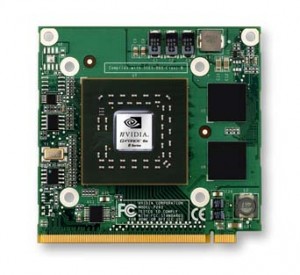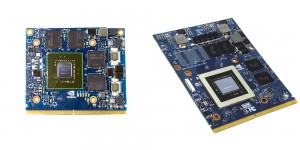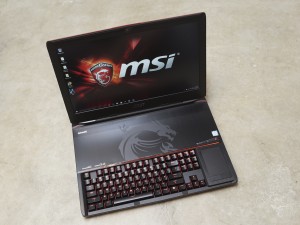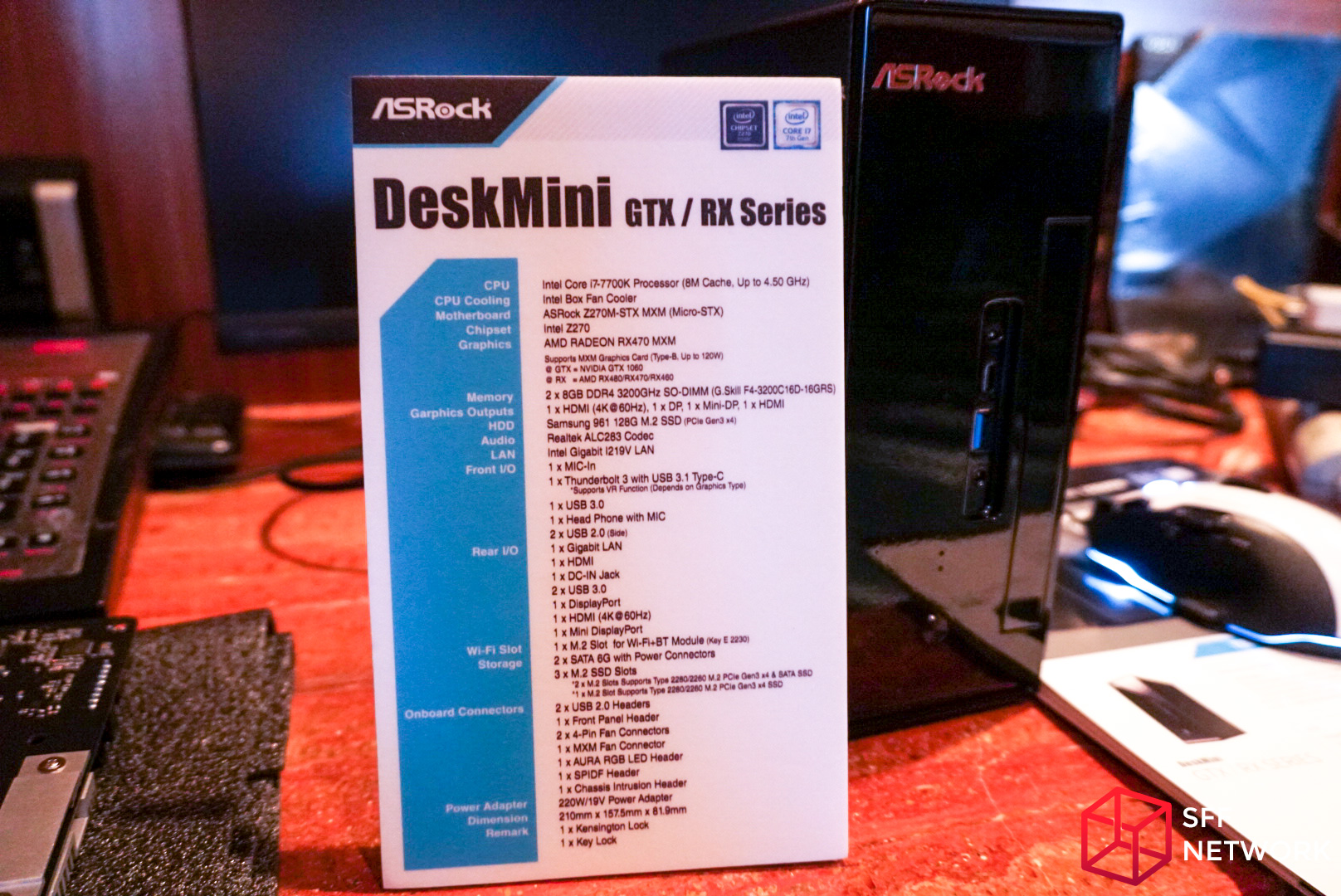Upgradeable graphics have long been an elusive concept in the notebook world, but there’s an increasing number of gaming notebooks that support Nvidia’s modular MXM technology to give you that very capability. Don’t think you can simply purchase any MXM notebook and be able to upgrade the graphics, though. We’ll discuss why in this article.

MXM was the first widely available solution for upgrading notebook graphics.
MXM: The Technology
The prospect of being able to upgrade a notebook’s graphics process has always been somewhat of a dream. The outright majority of notebooks sold have integrated, also known as onboard, graphics. These are permanently attached and integrated into the computer’s processor or motherboard. Even in notebooks that include a dedicated or “discrete” graphics processor (GPU), it’s still typically soldered to the motherboard – that is, permanently attached and not removable. If the graphics processor is modular, the chances are that it’s a proprietary design for that specific notebook model only. For gamers and other graphics-conscious consumers and prosumers, the idea of buying a platform with no future upgradeability is daunting, especially considering desktops costing an equivalent amount of money boast more processing power and nearly unlimited upgrade potential.
The first gleam of light for notebook owners came in 2004, when Nvidia announced its Mobile PCI Express Module (MXM) initiative. It was jointly developed to increase the adoption rate of dedicated graphics in notebooks. Since then, it’s gone through several format changes, but the overall idea remains the same: Use an industry-standard connection for notebook manufacturers to add discrete graphics and make it easier to upgrade graphics on existing systems. MXM technology has since been adopted by multiple notebook makers, including MSI, Asus, and Clevo.
The benefits of MXM extend to both the consumer and the notebook designer. For consumers whose usage depends greatly on the graphics processor, especially gamers and 3D professionals, the potential to be able to upgrade the notebook’s graphics in the future is undeniably attractive. This feature alone levels the playing field between notebooks and desktops. While the graphics card in a notebook may have only been powerful enough to play the latest games for a year or two, owners with upgradeable graphics will be able to upgrade their graphics down the line and enjoy continued usage out of their existing computer.

MXM is supposed to make repairs and upgrades easier.
For notebook designers, the benefit of MXM is simplified product design. Instead of designing customized graphics implementations for each notebook, they can use the same reference design for graphics across models. It also improves their ability to provide warranty service on the notebook. If the dedicated graphics are permanently integrated into the notebook and the graphics fail, most of the computer’s circuitry has to be replaced because there is no way to easily replace a soldered GPU. If the graphics are built into a separate MXM, it’s a relatively straightforward swap.
Still, there are challenges with the technology. As we’ll detail shortly, the primary challenge is inter-notebook compatibility. MXM modules that are used in one notebook may not be usable in another notebook, most especially if the notebook is of another brand. In addition, even if the MXM module fits in another notebook, the heatsink attachment may be different. Lowering hopes even further, most notebook makers who support MXM make no promise about future upgradeability outside of the existing solutions. In essence, buying a notebook with the expectation of being able to upgrade the MXM graphics card is still a risky proposition. It is, however, possible.
Inter-Notebook Compatibility
Doing a quick search on eBay, you’ll find numerous MXM cards for sale. Some are generic modules, while others are from or for specific notebook brands and models. Unless you’re buying the same MXM module to replace one that was already installed (or was offered) in your notebook, there’s no guarantee the module will work in your notebook. Let’s detail the numerous factors which can prevent you from upgrading your current MXM card to another (newer) GPU.

Not all MXM cards are the same. The Type B card (right) is physically larger than a Type A card (left).
Different MXM Types
One thing to keep in mind if you are hoping to upgrade the MXM card inside an older notebook is that the MXM standard has gone through several different specification changes in versions 1.3, 2.0, 2.1, 3.0 and 3.1 since the release of the first MXM cards. You need to be aware of this because some MXM card types have different physical dimensions and different locations for the mounting holes used to secure the MXM card inside the notebook. In addition, while the old MXM Type I, II and III cards all share the same connector, the MXM Type HE and IV have different connectors, and the newer MXM 3.0 Type A and MXM 3.1 Type B cards share still another type of connector. As long as you are upgrading a notebook built after 2009 then you probably only need to pay attention to the two different sizes of the modern MXM cards:
MXM 3.0 Type A (70 x 82 mm) and
MXM 3.1 Type B (105 x 82 mm).
BIOS/vBIOS Support
A leading reason why a new MXM module may not work in your old notebook is lack of BIOS support for the new GPU in that notebook. The BIOS in the notebook must support the vBIOS of the MXM card itself. It’s possible, although uncommon, for the notebook’s BIOS to be vBIOS agnostic; in other cases, the notebook’s BIOS will only support MXM cards running a certain vBIOS. This is the reason why some notebooks will work with a generic MXM module, and others will only work with MXM modules sold by the notebook maker for that particular notebook. The vBIOS of the MXM module can be flashed in certain instances.

Some gaming notebook manufacturers like MSI offer MXM upgrade kits.
If you own an MXM notebook and wish to upgrade the graphics, the best advice we can give is to check with the notebook manufacturer to see if they offer upgrade kits. Some custom PC builders offering Clevo-based gaming notebooks have a list of compatible MXM upgrades for each notebook and MSI offers MXM upgrade kits for several of their high-end gaming notebooks. Your second option is to buy an MXM upgrade module online, but you’ll need to do your research beforehand. Asking in
our discussion forums first before trying the upgrade is probably your best bet, as the chances are the upgrade you’re contemplating has already been tried or discussed.
Heatsink Design Differences
Although a standard MXM module may physically fit in different notebooks, a new heatsink assembly may be required to accommodate board design differences between MXM modules. The actual positioning of the graphics card die and other components that require cooling may differ from card to card. Notebook makers that offer MXM upgrade kits, such as MSI, often include a new heatsink assembly with the upgrade kit for this very reason. The heatsink used with the MXM module
must match the board layout
exactly, or the notebook will likely suffer catastrophic failure due to cooling problems.

High-end gaming notebooks like the Clevo P870DM-G support MXM upgrades, but you still have to deal with the fans and heatsinks.
Examples of Notebooks with MXM Capability
Just because a notebook uses removable graphics doesn’t mean they’re of the MXM format. Although MXM’s original intent was to be a notebook industry standard for swappable graphics, it’s by large still not a standard.
The
Asus G750JW is an example of a notebook that uses an MXM-like design, but isn’t true MXM. Its graphics card swappable, but only among graphics cards offered with that specific model.
An example of a notebook using a standard MXM interface is MSI’s monstrous
GT80S Titan SLI or many of the
Clevo-based notebooks offered by various custom PC shops. The MSI GT80S Titan SLI even supports two identical cards inside its dual MXM slots.
Conclusion
Despite MXM’s introduction over a decade ago, it’s still a rarity in the notebook world to find a model that not only uses the technology but makes it easy to upgrade. MXM cards are generally only found in gaming notebooks, and even then, the priciest and most exclusive models at that.
If your goal is to own a notebook and have the ability to upgrade its graphics, ensure the notebook maker has a history of offering or plans to offer graphics upgrade kits for that particular notebook in the future. Otherwise, there’s no guarantee of compatibility with other MXM modules. If you’re a gamer, you’re still best served by purchasing a notebook with the most powerful graphics card you can afford. That’s the most reliable way to give your notebook the best chance of being able to run games well into the future.









